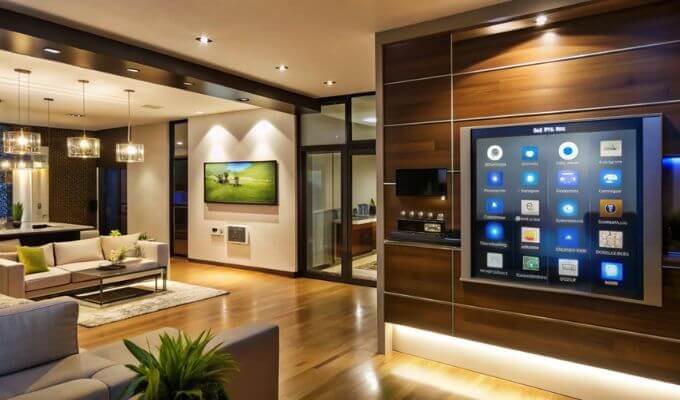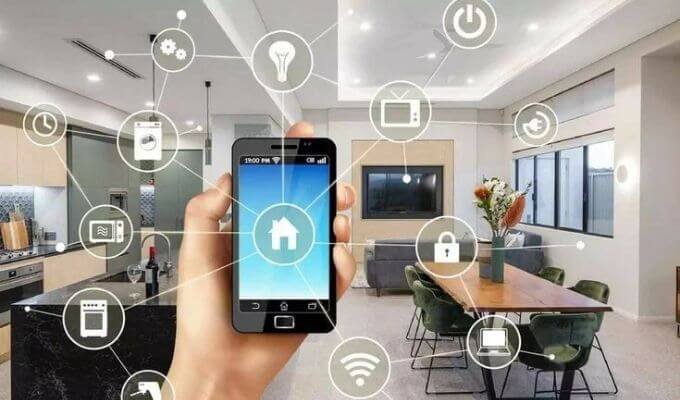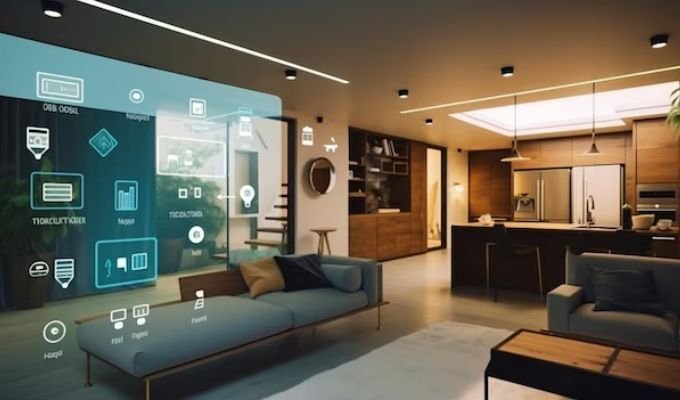In the quickly evolving digital times we live in now; smart houses are no longer a want but a necessity. Whether you want to turn lights on via voice command, monitor your security systems remotely, or get your climate control done automatically, home automation in India is quickly on the rise. But when planning to build a bright house, one crucial question faces every homeowner: Do you DIY or hire a professional to install your home automation system?
Let’s explore both options in detail—understanding the benefits, drawbacks, and ideal scenarios. By the end of this blog, you’ll be better equipped to decide which path is best for you.
Understanding Home Automation
Before comparing the two, it’s essential to know what home automation is. Home automation controls and automates lighting, heating, ventilation, air conditioning (HVAC), appliances, and security systems. With cheap technology and internet connectivity gaining traction in India, more and more homeowners are looking into smart home solutions for convenience, energy efficiency, and greater security.
DIY Home Automation: Control at Your Fingertips
What is DIY Home Automation?
DIY home automation requires installing smart devices and systems yourself—without the help of a professional. Most technology-literate users like to do this because it’s easy to customize and budget-friendly. Devices such as smart bulbs, plugs, voice assistants (such as Alexa or Google Home), and Wi-Fi-enabled security cameras are easily found throughout India via e-commerce sites and retail outlets.
Advantages of DIY Home Automation:
- Cost-Effective: DIY systems are cost-effective since there are no professional installation charges.
- Flexibility: You can start with some minimal devices and expand your setup over time.
- Hands-On Learning: You understand more about how your home automation system works.
- Easy Availability: Most DIY products are plug-and-play and can be easily located online.
Disadvantages of DIY Home Automation
- Limited Integration: Homebrew systems will not necessarily have deep integration between devices, which can lead to compatibility issues.
- Technical Knowledge Needed: Basic knowledge of networking and device setup is required.
- Time-Centric: Installation and diagnosis can be time-consuming and labor-intensive.
- Limited Support: If things go awry, you may be left with online forums or customer support rather than an in-your-face guru.
Ideal For: Technophiles, renters who cannot make structural changes, or homeowners who want to get their feet wet and gradually build a smart home.
Professional Home Automation: Customized and Turnkey
What is Professional Home Automation?
Professional home automation involves hiring experts who assess your needs, design a custom solution, and install it. These are more advanced and could involve wiring, networking, and centralized control systems. Professional home automation service companies in India increasingly offer end-to-end packages that include after-sales services.
Benefits of Professional Home Automation:
- Tailored Solutions: Specialists can tailor systems based on your lifestyle, building design, and future needs.
- Seamless Integration: Various device brands can be combined into a single homogeneous system.
- Expert Support: Experts take care of installation, configuration, and maintenance.
- Improved Security: Experts handle best practices in network security and device access control.
Drawbacks of Professional Home Automation:
- Higher Expenses: Professional installations are usually at a higher expense.
- Decreased Flexibility: Altering or adding new devices later may require additional professional support.
- Longer Setup Time: Professional installations are time-consuming due to consultations, planning, and implementation.
Best Suited For: Affluent homeowners, new residences, or newly built homes, and customers willing to spend extra money for a hassle-free experience.
Comparing the Two Methods in the Indian Context
India’s home automation sector is booming in metro cities like Delhi, Mumbai, Bangalore, and Hyderabad with increasing internet penetration and use of smart devices. Both DIY and professional automation are on an uptrend. However, factors like property type, budget, and user capability are critical in determining the mode.
Key Considerations:
Factor |
DSI Automation |
Professional Automation |
Budget |
Lower initial amount |
Higher investment |
Customization |
Limited |
High |
Installation Time |
Faster |
Slower |
Technical Know-how |
Required |
Not required |
Scalability |
Moderate |
High |
Support & Maintenance |
Limited |
Comprehensive |
Real-Life Scenarios
Scenario 1: Young Working Couple in an Apartment in Mumbai
They want voice-controlled entertainment systems, doorbell cameras, and bright lights. Without time and space, a DIY system with smart plugs, voice assistants, and app-enabled devices is perfect.
Scenario 2: Family Building a New Home in Bengaluru
They require centralized lighting, blinds, HVAC, and security management through a particular app and long-term scalability. A professional-grade solution with inbuilt panels and wiring is more prudent.
Conclusion: Choosing Your Path
DIY vs. Professional Home Automation isn’t a one-size-fits-all affair. Your budget, technical expertise, lifestyle, and the level of automation desired should guide your decision.
Choose DIY if you’re tech-savvy, price-sensitive, or just starting with basic automation.
Choose Professional if you’re looking for an end-to-end, future-proof solution with the least effort and utmost integration.
Either way, smart home technology is here to stay. As the Indian market keeps growing, more affordable and innovative solutions will make their way, rendering home automation accessible to all.
So, whether you’re a new user or a keen, smart home user—the best path is the best for you and your comfort. Make the right choice and move into the future of connected living.




